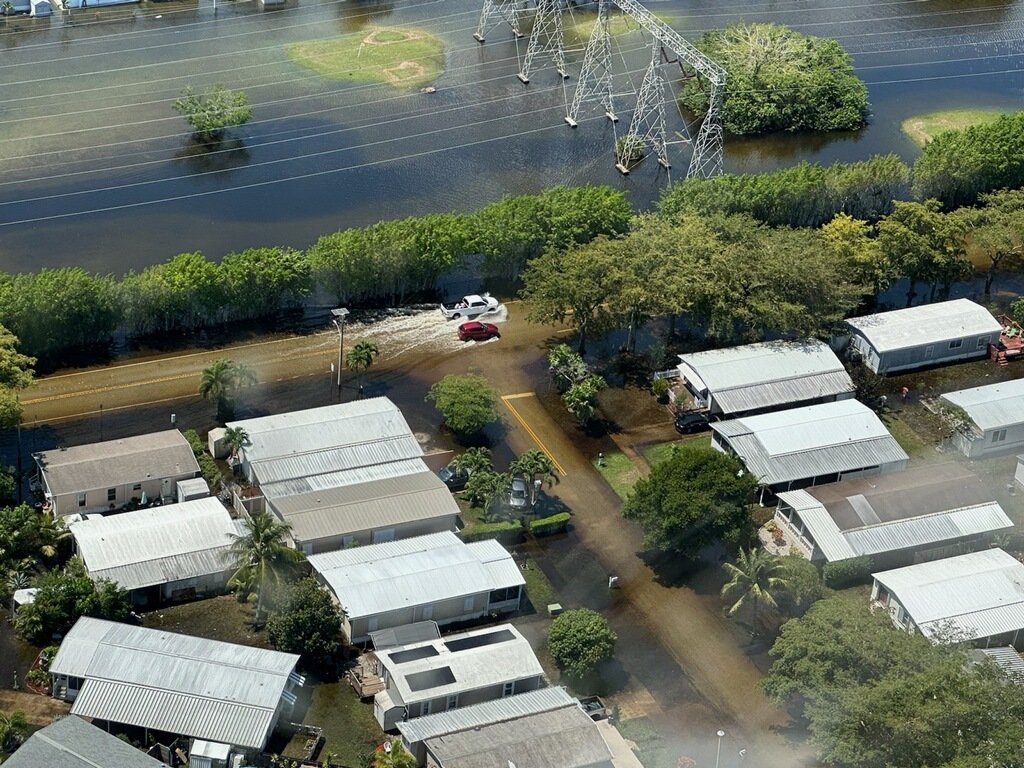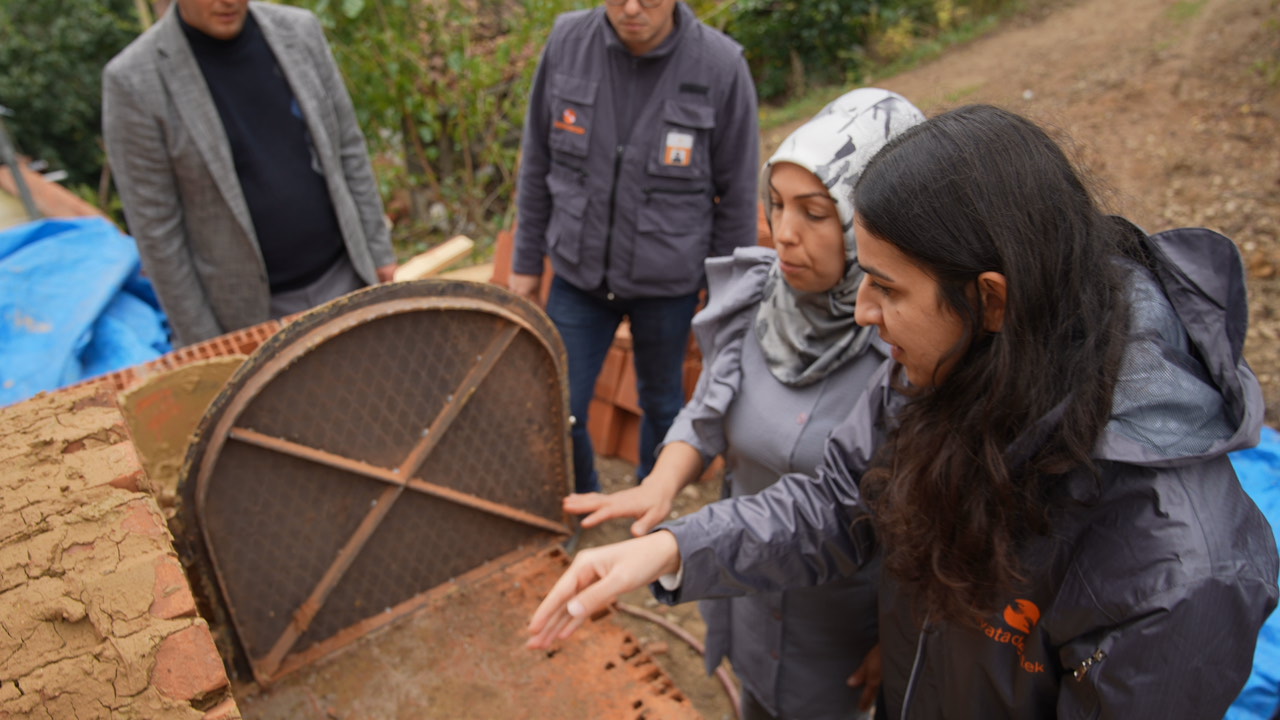What we’re watching: Weekly disaster update, April 17

We know all too well that disaster can strike anytime, anywhere in the world. Some disasters make headlines; others do not. Here at the Center for Disaster Philanthropy (CDP), we monitor the status of disasters worldwide and compile a list of the ones we’re tracking weekly, along with relevant disaster-related media coverage.
Here’s what we’re watching for the week of April 17, 2023.
New or Emerging Disasters
Cyclone – Australia: Around midnight local time on April 13, Cyclone Ilsa made landfall in Western Australia. Ilsa recorded winds of 150 miles (240 kilometers) per hour upon its approach. That equates to a Category 5 storm on Australia’s intensity scale, equivalent to a Category 4 storm on the Saffir-Simpson hurricane wind scale.
The cyclone was later downgraded but was the strongest to hit the region in 14 years. Preparations before the storm included sandbagging, securing homes and businesses, and moving ships from the Port Hedland harbor. The affected Pilbara region of Western Australia is sparsely populated, and officials say getting support for the area will take time. Some damage was reported to homesteads and station properties in the region.
Floods – Florida: Torrential rainfall inundated southeast Florida on April 13, with Fort Lauderdale receiving 25 inches of rain, making it a 1 in a 1,000-year weather event according to the National Weather Service. Roadways and homes were flooded, and emergency crews carried out several rescues. The runways were flooded at the Fort Lauderdale-Hollywood International Airport, forcing it to temporarily shutdown.
The amount of rainfall ranked among the top three in major U.S. cities over 24 hours. The rare “supercell” storm hovered over Fort Lauderdale for six to eight hours when typically, a cell like that would last only 20 minutes or keep moving. The key to this storm was the infinite availability of warm ocean air from the Gulf Stream. Experts say such one-day downpours will continue to increase in frequency and magnitude in the coming decades.
On April 17, a tornado warning was issued for part of Broward County. More heavy rain was expected, and a risk for additional flooding was possible. The rest of the week is expected to be drier, with isolated showers.
Heatwave – India: Temperatures in large parts of India were over 100 degrees Fahrenheit (40 degrees Celsius) over the past several days. The India Meteorological Department predicted heatwave conditions to continue in parts of east India and the northwest region the week of April 17. In Navi Mumbai in the state of Maharashtra, 13 people died due to “sunstroke” after attending a civilian award ceremony. Educational institutions in West Bengal were closed the week of April 17 due to the heatwave affecting the state.
Previous/Ongoing Disasters
Chemical Emergency – California: On November 24-25, 2022, a powdery substance was released into the city of Martinez by Martinez Refining Company, and it contained higher-than-normal amounts of heavy metals. Residents have been warned not to consume any produce grown in their yards in case of dangerous contamination. The Bay Area Air Quality Management District released a report showing what parts of the community were impacted by the release. The map’s purpose is only for the county to use for its soil sampling program, but it provides residents with something in their search for answers.
Floods – Kenya: The “long rains” season brought heavier than usual rains in March and April, with flooding observed across the northern and southern parts of Kenya. The “long rains” season is a crucial period for Kenya’s agricultural sector; however, this season’s disasters have been devastating. The flooding resulted in the deaths of at least 12 people, hundreds have been displaced from their homes, and more than 36,000 were affected across 19 counties.
In addition to the disasters listed above, we actively monitor the following disasters or humanitarian emergencies. For more information, see the relevant disaster profiles, which are updated regularly.
- Afghanistan Humanitarian Crisis
- COVID-19 Coronavirus
- Horn of Africa Hunger Crisis
- 2022 Pakistan Floods
- Tropical Cyclone Freddy
- 2023 Turkey-Syria Earthquake
- Ukraine Humanitarian Crisis
- 2023 US Tornadoes
U.S. Midwest Low-Attention Disasters
The Midwest is regularly faced with low-attention disasters that affect people across the region. CDP’s Midwest Early Recovery Fund (ERF) effectively funds efforts that catalyze equitable disaster recovery.
These are some of the latest disasters and related news the ERF team is monitoring:
- Wildfires broke out in at least six Nebraska counties the week of April 10. Governor Jim Pillen declared disasters in Cherry, Garfield and Jefferson counties. The McCann Fire in Cherry County burned at least 7,000 acres and was mostly contained as of April 14. The Lowry Fire in Garfield County is also contained, but not before burning 6,000 acres, damaging several structures and injuring two people.
- Above-average snowpack this year has officials across the West concerned. Parts of southwest Montana experienced some flooding the week of April 10, when warmer temperatures caused snow to melt quickly. In Gallatin County, some roads were temporarily closed, and canals were reportedly breached, but other immediate impacts were limited. Flooding was also reported in Williams County.
- In anticipation of spring flooding due to rising temperatures and the heavy snowpack, North Dakota Governor Doug Burgum issued an executive order declaring a statewide emergency on April 10. The executive order puts all state agencies on standby to provide necessary resources and capabilities.
Complex Humanitarian Emergencies – Democratic Republic of Congo (DRC)
Many places worldwide are experiencing emergencies caused by conflict, climate change, drought, famine, economic challenges and other conditions that combine to create a complex humanitarian emergency (CHE). CDP maintains complete profiles on several CHEs, and what CDP considers Level 1 CHEs are profiled in this weekly blog post and tracked.
The humanitarian response in DRC is one of the longest running on the African continent. According to the United Nations Office of the Coordination of Humanitarian Affairs, “Until a solution to the conflict is identified, humanitarian needs are likely to continue to increase, with insufficient levels of funding to assist all those in need.”
The conflict has brought reports of widespread human rights abuses, including murder, rape, looting and the burning of homes. In February, Human Rights Watch said the Rwanda-backed M23 armed group “has committed summary executions and forced recruitment of civilians in eastern Democratic Republic of Congo.”
More than 800,000 people have been displaced by the conflict since March 2022, and unsuccessful attempts to obtain a ceasefire have allowed fighting to continue. Humanitarian conditions and insecurity are made worse by the presence of other armed groups in addition to M23. The Allied Democratic Forces, a Ugandan group based in eastern Congo that has pledged allegiance to Islamic State, claimed responsibility for an attack in April on a village in eastern DRC that killed around 20 people.
One out of four Congolese, or 26.4 million people, are severely food insecure. The World Food Programme says it needs $127.4 million to provide lifesaving food and cash assistance to 1.1 million people in North Kivu, Ituri and South Kivu from March to June 2023. The DRC also experiences high levels of disaster risk due to its geography and underlying vulnerability. In early April, a landslide killed at least 21 people in North Kivu province. As of April 11, donors had funded just 51% of the DRC’s 2022 Humanitarian Response Plan.
In Goma, the DRC’s main eastern city, The New Humanitarian spoke with a collective of local volunteer activistshelping people in need, demonstrating the power and effectiveness of local action and actors.
Upcoming webinars

May 11: Older adults and disasters: Overcoming stereotypes and strengthening inclusion

June 8: Survivor and community-led response: Putting people first in a crisis
What We’re Reading
- Countries facing most climate disasters already ‘drowning in debt’ – Independent: Research conducted by ActionAid “revealed that 38 out of 63 most climate vulnerable countries are slashing spending on vital public services to service their debt, jeopardising their ability to effectively respond to climate disasters.”
- Humanitarian aid needs an overhaul to address hunger crisis: Report – Devex: A new report from the Rockefeller Foundation written by former UNICEF Executive Director Carol Bellamy includes recommendations such as “planning for disasters long before they hit and funneling more money to local organizations as first responders.”
- What’s the ‘Flagship Initiative’, and how might it transform emergency aid? – The New Humanitarian: Initiated by Emergency Relief Coordinator Martin Griffiths, the UN’s top humanitarian official, the Emergency Relief Coordinator’s Flagship Initiative aims to transform an aid delivery system currently run as a supply-driven model “to one that is less bureaucratic and able to respond more nimbly to needs as articulated by affected people.”
- Colorado’s 2023 wildfire season has begun. Here’s how counties are responding. – The Colorado Sun: Fire planners across the state are implementing various actions and strategies to make 2023 safer. The extra moisture from this year’s above-average snowpack will likely buy fire officials time they can dedicate to mitigation work.
- Methane from megafires: more spew than we knew – University of California, Riverside: Wildfires emitting methane is not new. But UC Riverside scientists found that the amount of methane from the top 20 fires in 2020 was more than seven times the average from wildfires in the previous 19 years.
- Arkansas tornadoes affect mental health of residents, students – Arkansas Democrat Gazette: After the devastating March 31 tornado outbreak Arkansas, officials say severe weather fatigue and mental health issues can affect people after the disaster, whether they were directly or indirectly impacted. Resources are available to assist children and adults.
- Tornadoes are becoming more frequent east of the Mississippi River, putting more people at risk – Iowa Public Radio: “States in the Midwest and South have already seen many deadly tornadoes so far this year. These parts of the country are also where the number of severe events are steadily increasing.”
California officials and emergency responders have been busy in 2023 dealing with back-to-back storms. Yet they still make time for pet rescues, like these firefighters who helped a pug stranded on a roof.
